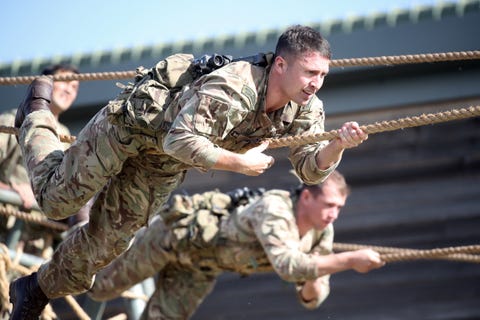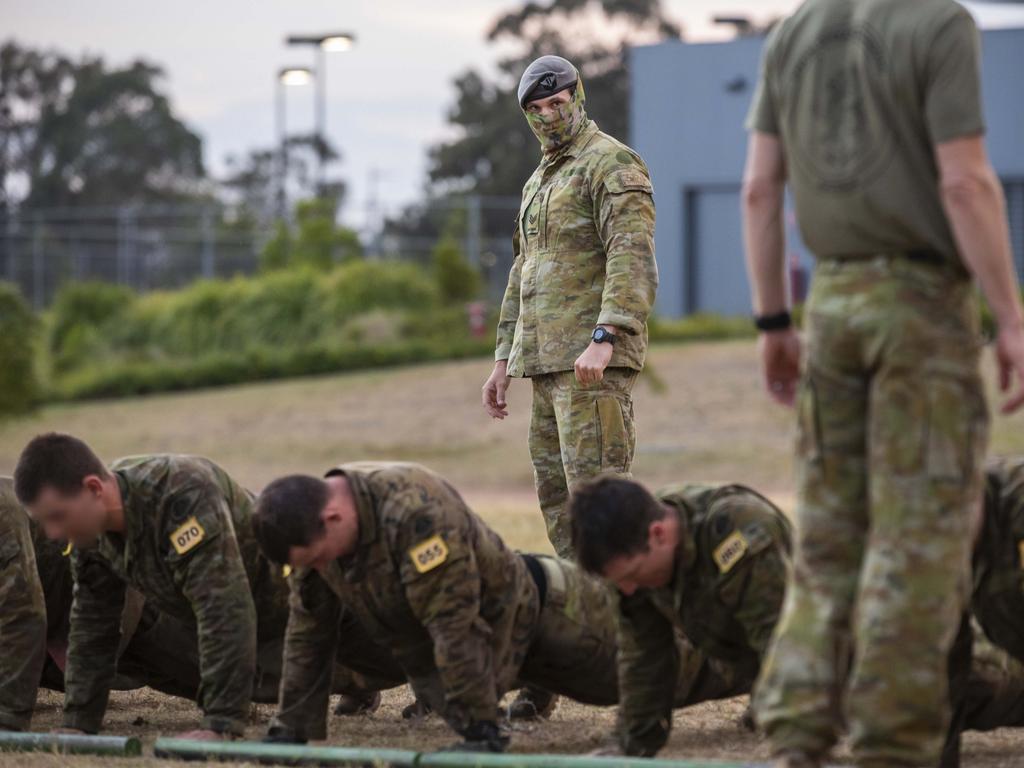I’ve seen enough movies to know what to expect from a taskmaster like Kevin Toonen. As the strength and conditioning coach for the Australian Special Forces, he’s sure to play the hard bastard as he puts a colleague and me through a military-style workout.
I’m predicting he’s going to shove that bushy beard of his right in our grills, spitting insults like “pathetic maggot” and “worthless piece of shit” into our sweat-soaked dials.Sounds like fun, in a Heartbreak Ridge kind of way.Intercepting us inside Sydney’s 98 Riley St Gym, Toonen is as stocky and immovable as a rugby hooker.

His handshake is firm; his gaze cool and appraising: you have the sense he has instantly identified your weak points. If this were battle, if Toonen were the enemy, my next of kin would be getting a telegram in the next day or two.“OK, you two,” he says after minimal pleasantries, “get changed.”Over the next hour, Tooney demonstrates an approach to training that could change the way you think about fitness, especially the why of it. He also tells it straight on what it means to be a man who’s useful, capable and self-assured.To make it into the Special Forces, which includes the Special Air Service Regiment (SAS), two Commando Regiments and five other specialist units, you have to get past former soldier Toonen. That means not only measuring up physically but also proving yourself a cool head who would bury your ego for the good of the unit. While nearly all applicants come from the army, navy or air force, it’s possible to make it into the Special Forces from outside the defence umbrella.

According to the ADF, serving in these elite units entails complex and dangerous missions that could happen anywhere in the world – though read that as Afghanistan and Iraq for most of this century. Even more than your average soldier, SF members need to be resilient, resourceful, quick thinking. When it comes to picking them, Toonen’s job is to sift the exceptional from the merely impressive.Build-Up To WarEven for Special Forces guys, workouts begin slowly, with Toonen meticulous about activating muscles before forcing them to perform. We warm up by walking – forwards, backwards, sideways – with resistance bands encircling our ankles. We stretch, lunge and jump.
Sure enough, Toonen calls our flexibility “pathetic” and our first go at standing broad jumps “atrocious”.The session’s shock-and-awe element is a barrage of squats: 10 sets of 10 repetitions performed every minute on the minute while clutching a 35-kilogram dead ball to our chests.Channeling Private Benjamin, I baulk at the 35kgs’ resistance. “I’m on the mend from a back injury,” I tell Toonen, “and that’s nearly half my bodyweight.” The coach conceals what I interpret as contempt behind a mirthless snort while plonking a significantly lighter ball at my toes.If this were a Special Forces Screen Test – stage one in the selection process – I would have flunked already.

I’d have been better served at least having a crack with the heavier ball, even if I’d got stuck underneath it, splintered my spine and left the gym on a stretcher. As it is, I’ve squibbed the challenge. Raised the white flag.“We use physical stress to test the mind,” says Toonen. “We want to take it to the edge, past people’s perceived limits of themselves.”Only then, explains Toonen, do you see what a man’s made of. “Behind that everyday façade, everyone saves 20-30 per cent for a rainy day. We want to expose that all the time. We want to know whether you’ll give us 100 per cent. Not the 100 per cent you think you have.
But the 100 per cent where, at the end of the task, you say to yourself, I would never have thought I could do that.”The takeout: Special Forces takes only very fit people. But there’s something it values higher: sheer will to prevail.RELATED: Are You Special Forces Material? This Test Will Tell You





